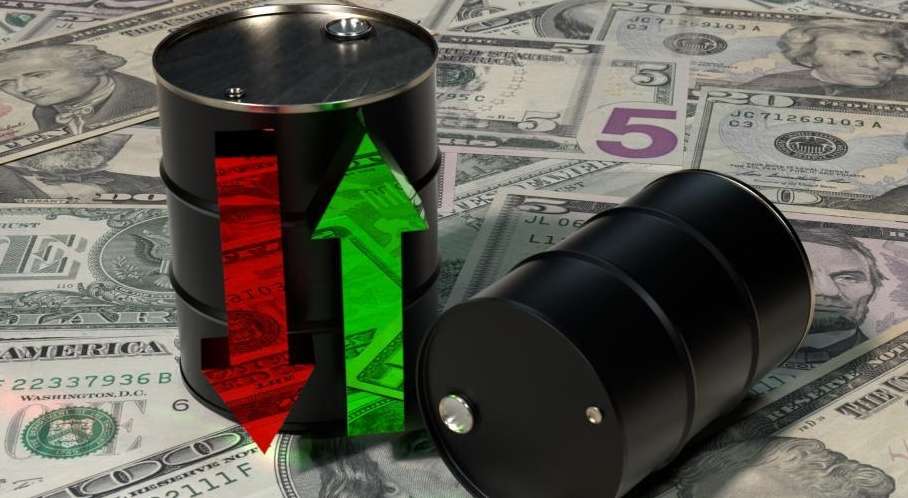Rising Oil Prices Ignite Activity in Petroleum Stocks
Advertisements
On January 13, the Hong Kong stock market displayed a generally weak performance; however, the oil sector defied this trend and showed noticeable gains. Some oil transportation stocks even experienced significant increases in value.
As of the latest update, several key players in the Hong Kong oil sector were on the rise. China National Offshore Oil Corporation (CNOOC, stock code: 00883.HK) saw an increase of 2.23%, while PetroChina (stock code: 00857.HK) rose by 1.97%. Additionally, China Oilfield Services (stock code: 02883.HK) and Kunlun Energy (stock code: 00135.HK) also joined this upward trend. The oil transportation sector marked impressive gains as well, with China Cosco Shipping Energy Transportation (stock code: 01138.HK) soaring by 6.97%, and Orient Overseas International (stock code: 00316.HK) climbing by 2.05%.
Meanwhile, the A-share market also reflected this positive sentiment surrounding oil-related concept stocks. Sinopec Oilfield Service Corporation (stock code: 600871.SH) increased by 2.08%, China Petroleum & Chemical Corporation (stock code: 601857.SH) by 1.94%, and China Oil Engineering Company (stock code: 600339.SH) by 1.2%. The rally for these stocks was closely linked to rising international oil prices.
According to data from Wind, as of the latest update, the ICE Brent crude oil price surged by 1.91%, landing at $81.28 per barrel, marking a return to the key $80 level. Over the past three trading days, this price had accumulated a rise of over 6%. The Shanghai crude oil index also experienced a significant increase of 6.09%, now standing at 616.93. The momentum in oil prices can be attributed to a variety of factors, which have collectively reignited market optimism.
One significant driver behind the rising oil prices is the cold weather gripping the United States and Europe, which has boosted demand for heating oil, coupled with dwindling US crude inventories raising supply concerns. Goldman Sachs highlighted that the recent oil price hikes primarily stemmed from increased demand for heating oil amid cold spells in the northeastern United States and Europe. Furthermore, the latest forecasts from the Organization for Economic Co-operation and Development (OECD) indicate that commercial oil inventories have fallen to 30 million barrels below levels anticipated for this time next year.
Moreover, oil prices breaking above the 100-day moving average triggered algorithm-based trading, leading to even higher prices. Goldman Sachs now predicts that the recent drop in temperatures across the US and Northwestern Europe will drive an additional 100,000 barrels per day in oil demand, particularly supporting diesel prices which have rebounded more than 10% since their lows in early December.

On another front, JPMorgan anticipates a substantial year-on-year increase of 1.6 million barrels per day in global oil demand in the first quarter of 2025, mainly driven by demand for heating oil, kerosene, and liquefied petroleum gas.
Amidst these changes, another factor contributing to potential price instability in the oil market is the nearing end of the presidential term in the United States. Concerns regarding policies from the newly elected president, particularly sanctions on Iran and the possible disruption of global energy trade owing to ongoing trade conflicts, could create a tightening of global oil supply expectations. Analysts from Dongguan Securities have noted that, following the election, an acceleration in the clearance of shadow fleets could further escalate market expectations regarding sanctions and contribute to a marginal rise in Very Large Crude Carrier (VLCC) freight rates, consequently pushing up the overall valuation of the sector.
Lastly, the mounting sanctions from Western nations against Russian oil have exacerbated global supply worries. On January 10, the United States announced a new round of sanctions targeting various entities within the Russian oil industry, including producers, shipping companies, intermediaries, and ports. This decision included significant corporations such as Gazprom and Surgutneftegas, along with over 180 oil tankers and various Russian energy officials. This has been hailed as the most severe round of sanctions the US has imposed on the Russian oil sector to date.
Simultaneously, the UK followed suit by implementing sanctions against Russia’s two major oil giants, Gazprom and Surgutneftegas. Reports suggest that prior to 2024, these two companies were exporting approximately 970,000 barrels of oil daily by sea, constituting around 30% of Russia's total oil tanker volume.
Traders and analysts are now expressing concerns that Russia's oil exports will be significantly impacted by these new sanctions. As a crucial player in the global oil production and export landscape, any restrictions on Russia's oil exports are likely to dampen worldwide supply levels. Consequently, major buyers may be compelled to procure oil from the Middle East, Africa, and the Americas, which not only has the potential to escalate oil prices but also raises transportation costs due to increased shipping distances, further influencing the pricing structure and market dynamics of the entire oil industry.